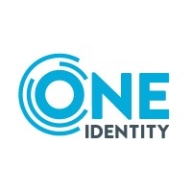

One Identity Active Roles and Microsoft Active Directory are prominent solutions for managing identity and access. One Identity Active Roles has an edge in automation capabilities and customizable workflows, while Microsoft Active Directory offers strong integration with other Microsoft products.
What features are offered by One Identity Active Roles in comparison to Microsoft Active Directory?One Identity Active Roles offers robust automation capabilities that streamline identity management tasks. It also provides highly customizable workflows that allow users to tailor the system to their specific needs. Another notable feature is its advanced user provisioning and deprovisioning processes, which enhance security and compliance. Microsoft Active Directory excels in its robust integration with other Microsoft products, making it a versatile option for organizations using the Microsoft ecosystem. It also offers extensive, built-in features such as Group Policy management and access controls. Additionally, Active Directory's directory services feature provides a central point for network administration and security.
What areas of improvement can be found in One Identity Active Roles in comparison to Microsoft Active Directory?Users suggest that One Identity Active Roles could benefit from a more intuitive configuration setup to simplify the user experience. Another area for improvement is enhancing the speed and responsiveness of the user interface. Users also recommend better documentation to aid in the setup and troubleshooting processes. Microsoft Active Directory needs more straightforward access management to simplify the handling of complex tasks. It could also improve its mobile device management capabilities for better integration in a mobile-first world. Furthermore, users indicate a need for more user-friendly reporting tools to facilitate easier data extraction and analytics.
How is the ease of deployment and customer service of One Identity Active Roles in comparison to Microsoft Active Directory?One Identity Active Roles is noted for its relatively simple deployment process, allowing for quick implementation. However, it sometimes lacks timely customer support, which can be a challenge for ongoing management. Microsoft Active Directory, while more complex to deploy, provides excellent customer service post-deployment, offering valuable support to address any issues that arise. Each product has its strengths and challenges in deployment and support, depending on the specific needs of the organization.
What setup costs and ROI can be seen with One Identity Active Roles in comparison to Microsoft Active Directory?One Identity Active Roles is viewed as cost-effective with good ROI for most organizations. However, some users find the initial setup cost high, which can be a barrier for smaller organizations. Microsoft Active Directory is generally more expensive, but it is considered worthwhile due to its comprehensive features and extensive integration capabilities. Users are divided on the cost-value proposition of each product, making it essential for organizations to weigh their specific needs and budget constraints when choosing between the two.
The solution is really time-saving since I don't need to create users in each server or system manually, and user access control is streamlined.
One Identity Active Roles provides excellent reporting and auditing functionality, allowing administrators to track permissions, actions, and responsibilities effectively.
It has saved 90% of the time compared to before.
Support documents are available on the internet in every language.
If you purchase retail, the support will be more difficult because they will assess the priority or rating from the customer.
Sometimes support takes long to engage and resolve, extending over weeks or even months.
One Identity's support is great.
I rate customer service and support as a seven because, although they are helpful when needed, there can be delays in responding to tickets and finding necessary fixes.
Sometimes having a fix for a bug takes too much time.
Microsoft Active Directory scales effectively; I don't foresee any issues with that at all.
It is very beneficial for large and complex environments.
If you are a major enterprise customer, it is a matter of scaling out on resources with more memory, disk, and CPU power.
The solution is highly scalable, with a scalability rating of nine.
If you meet the installation requirements from Microsoft, it will be very stable.
With multiple domain controllers, stability is ensured.
I've been working with Microsoft Active Directory for over 3 years, and we've had no problems.
There were no major problems with One Identity Active Roles.
We haven't had any glitches.
I would rate the stability as a seven because there are sometimes performance issues, which require restarting the services.
Exporting and verifying group memberships require command line scripts, which isn't simple.
There are some features that need improvements in terms of ease of use and frequency of updates.
Sometimes, it can be overly complicated, and when you apply Group Policy in an Active Directory environment, sometimes those settings apply and sometimes they don't.
A way to connect to various directories and integrate with cloud directories would be beneficial.
Enhancements to the console are also necessary because it is more confusing than the web interface.
The user interface needs to be more modern and scalable.
For the cloud solution in our region, the pricing of Microsoft Active Directory is very high.
I consider Microsoft Active Directory expensive because if you buy this thing bundled with the Windows Directory Server, you get five user licenses for about a thousand euros, or a little bit less than this.
The pricing, setup cost, and licensing with Microsoft Active Directory is straightforward; you just buy the server and then have to buy the user CALs.
It is quite expensive, costing more than 50 euros per identity.
The pricing is high.
The pricing of One Identity Active Roles is expensive, but the return on investment justifies the cost, allowing for savings in other areas.
To assess the impact of Microsoft Active Directory's centralized domain management on security protocols and access permissions, Microsoft Active Directory itself has constraints with security because when we have a solution such as SSO or Single Sign-On, which makes it easier for users to log in, some parts have security openings.
One valuable feature is the centralized creation of IDs.
I can control all the devices in my domain by just changing the group policies in one place.
It's improved our security posture. It has limited access to our crown jewels, where all our identities lie within Active Directory.
It helps in removing custom Active Directory delegation, which enhances security by eliminating unnecessary privileges, addressing identity-based breaches by reducing the number of Active Directory delegations.
Dynamic groups are also one of the best features, eliminating the need to add or manage members manually.
| Product | Market Share (%) |
|---|---|
| One Identity Active Roles | 10.2% |
| Microsoft Active Directory | 6.2% |
| Other | 83.6% |


| Company Size | Count |
|---|---|
| Small Business | 19 |
| Midsize Enterprise | 7 |
| Large Enterprise | 20 |
| Company Size | Count |
|---|---|
| Small Business | 7 |
| Midsize Enterprise | 2 |
| Large Enterprise | 17 |
Active Directory stores information about objects on the network and makes this information easy for administrators and users to find and use. Active Directory uses a structured data store as the basis for a logical, hierarchical organization of directory information.
This data store, also known as the directory, contains information about Active Directory objects. These objects typically include shared resources such as servers, volumes, printers, and the network user and computer accounts.
Security is integrated with Active Directory through logon authentication and access control to objects in the directory. With a single network logon, administrators can manage directory data and organization throughout their network, and authorized network users can access resources anywhere on the network. Policy-based administration eases the management of even the most complex network.
One Identity Active Roles is a highly regarded solution for Active Directory (AD) security and account management. One Identity Active Roles will enhance group, account, and directory management while eradicating the need for manual processes. The end result is a significant increase in the overall speed, efficiency, and security of the organization.
Using One Identity Active Roles, users can:
Managing accounts in AD and Azure AD can be tremendously challenging; continually keeping these important systems safe and secure presents an even greater challenge. Traditional tools can be inefficient, error-prone, and very disjointed. In today’s robust marketplace, organizations are finding it somewhat difficult to keep pace with the constant access changes in a hybrid AD ecosystem. Additionally, there are significant security issues to consider (government compliance, employee status/access changes, and other confidential business requirements). And, of course, there is a requirement to properly manage Active Directory and Azure Active Directory access in addition to managing all the other numerous SaaS and non-Windows applications that organizations use today.
Users can easily automate all of these tedious, mundane administrative tasks, keeping their systems safe and error-free. Active Roles ensures users can perform their job responsibilities more effectively, more efficiently, and with minimal manual intervention. Active Roles was created with a flexible design, so organizations can easily scale to meet your organizational needs, today, tomorrow, and in the foreseeable future.
Reviews from Real Users
A PeerSpot user who is a Network Analyst at a government tells us, “It has eliminated admin tasks that were bogging down our IT department. Before we started using Active Roles, if one of our frontline staff members deleted a user or group, it could take several hours to try to reverse that mistake. Whereas now, the most our frontline staff can do is a deprovision, which just disables everything in the background, but it's still there. We can go in and have it back the way it was two minutes later. Instead of it taking two hours, it only takes two minutes.”
Becky P., Sr Business Analyst at George Washington University, shares, “In addition, with the use of workflows and the scheduled tasks, we were able to automate and centrally manage a number of the processes as well as utilize them to work around other product limitations. Those include, but are not limited to syncing larger groups, which have 50,000 plus members, to Azure AD. We sync up to Azure AD using ARS. If we had not already had ARS in place, it would have been impossible for us to have done so in the time period we did it in. We did it in under six months. ARS probably saves us at least two weeks out of every month. It's reduced our workload by 50 percent, easily.”
We monitor all Active Directory Management reviews to prevent fraudulent reviews and keep review quality high. We do not post reviews by company employees or direct competitors. We validate each review for authenticity via cross-reference with LinkedIn, and personal follow-up with the reviewer when necessary.